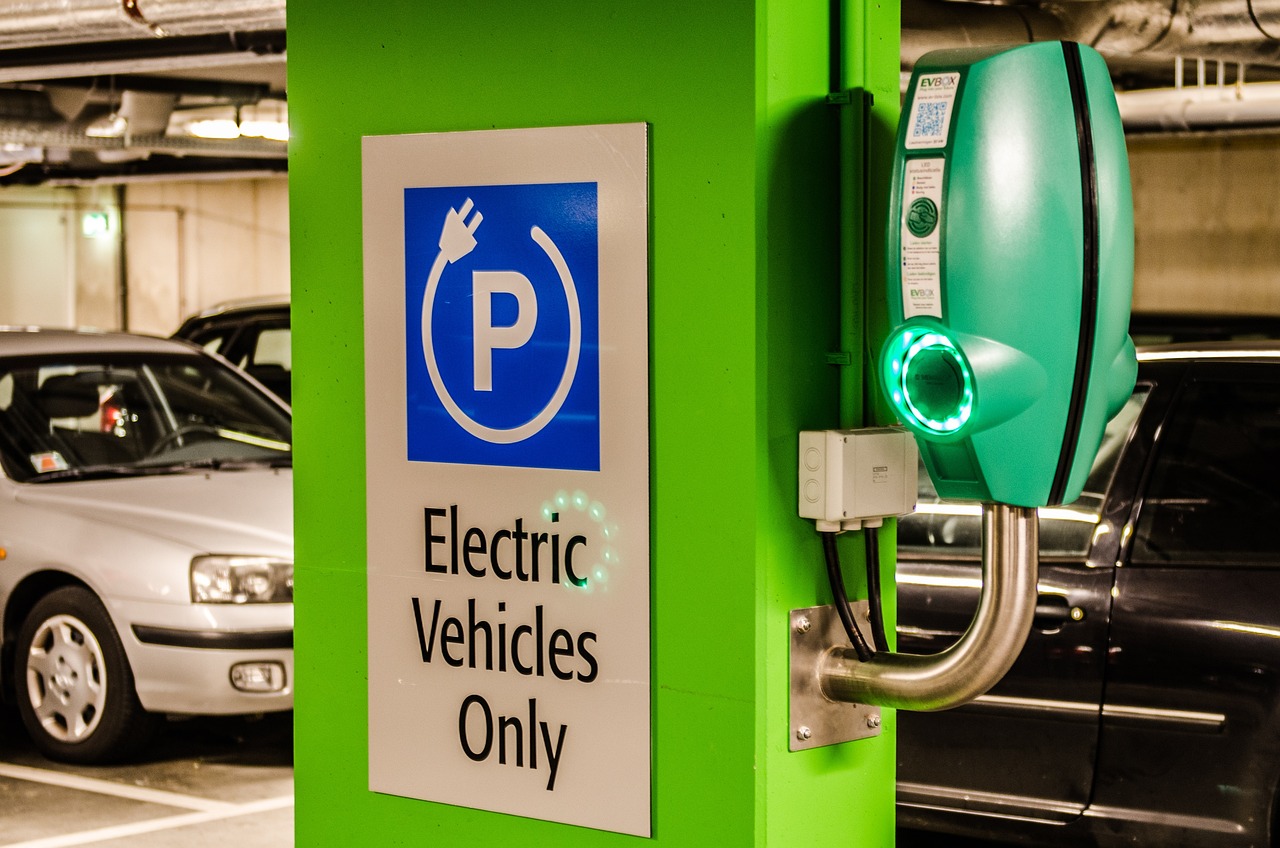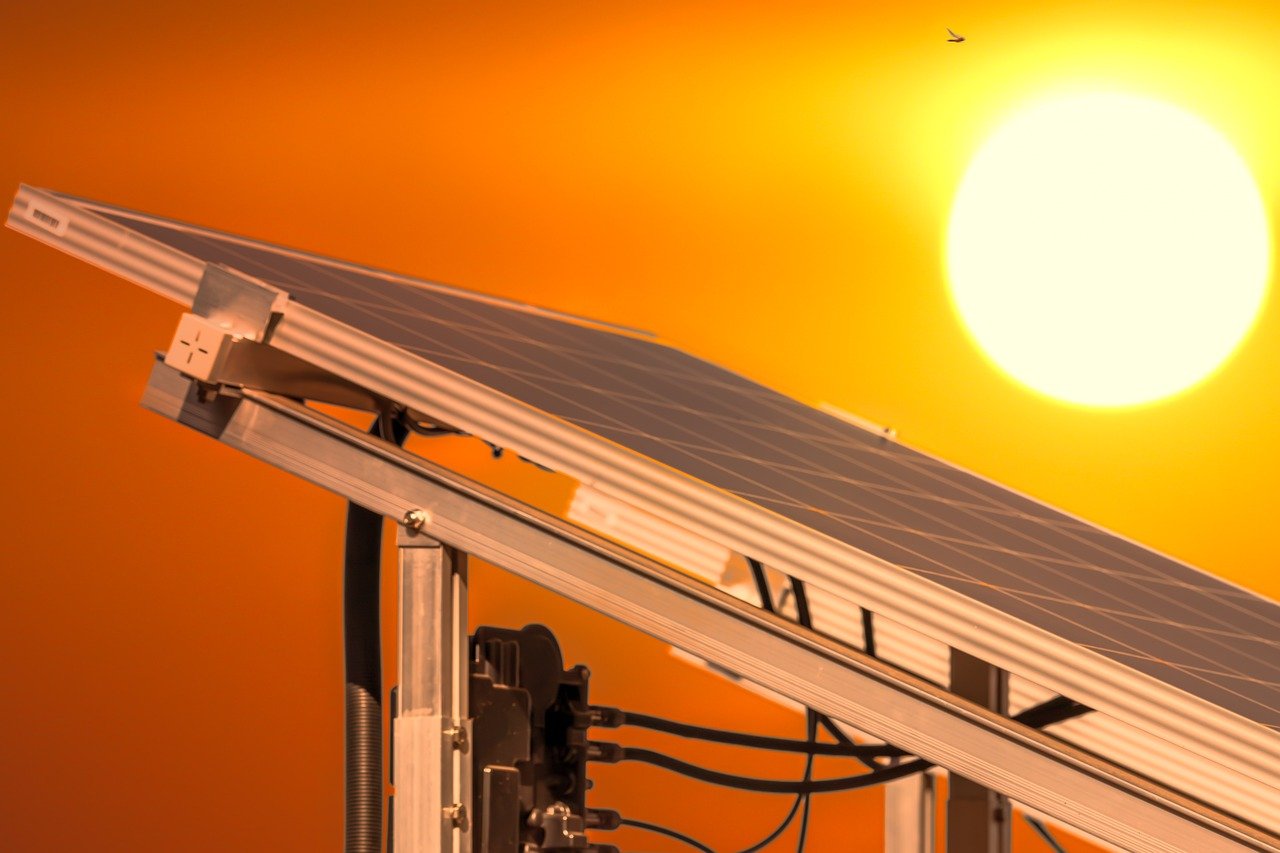Green Energy for Electric Vehicles - The Way Forward?
As we stand at the crossroads of innovation and sustainability, the electric vehicle (EV) sector is rapidly evolving. With the world increasingly recognizing the urgency of climate change, the shift towards green energy for powering electric vehicles is not just a trend; it's a necessity. Imagine a future where your car runs on sunlight or wind, significantly reducing your carbon footprint while driving through a cleaner, healthier environment. This vision is becoming a reality as we explore the myriad ways green energy is transforming the EV landscape.
But why is green energy so crucial for electric vehicles? The answer lies in the need to combat climate change and reduce our reliance on fossil fuels. Traditional electricity sources, primarily derived from coal and natural gas, contribute to greenhouse gas emissions. By switching to renewable energy sources, we can significantly cut these emissions and align with global sustainability goals. It's not just about driving electric cars; it's about ensuring that the power fueling them is equally sustainable.
Moreover, the integration of green energy into the EV sector offers a plethora of benefits. Not only does it enhance energy security by diversifying our energy sources, but it also promotes technological innovation. As we harness renewable energy, we can develop advanced charging infrastructures and smart grid technologies that optimize energy use. This synergy between electric vehicles and renewable energy could pave the way for a more resilient and sustainable transportation system.
However, the journey towards a greener future is not without its challenges. Infrastructure development, the initial costs of transitioning to renewable sources, and the need for technological advancements pose significant hurdles. Yet, with concerted efforts from governments, businesses, and consumers alike, these challenges can be overcome. The potential rewards—clean air, reduced reliance on fossil fuels, and a healthier planet—are well worth the effort.
In the following sections, we will delve deeper into the types of green energy sources available, their applications in the electric vehicle sector, and the obstacles we must navigate to realize this vision fully. Buckle up; the road to sustainable transportation is just getting started!
Green energy is crucial for reducing carbon emissions. This section discusses its role in combating climate change and how it aligns with the goals of sustainable transportation.
Various renewable energy sources, such as solar, wind, and hydro, can power electric vehicles. This section examines each source's viability and contribution to a greener future.
Solar energy harnesses sunlight to generate electricity. This subsection highlights its applications in electric vehicle charging and the benefits of solar-powered infrastructure.
Solar charging stations are emerging as a practical solution for electric vehicle owners. This section discusses their advantages and the technology behind them.
Integrating solar energy with smart grids enhances energy distribution efficiency. This subsection explores how this synergy can optimize electric vehicle charging.
Wind energy is another promising renewable source for electric vehicle charging. This section outlines its potential, challenges, and current implementations in the EV sector.
Despite its benefits, several challenges hinder the widespread adoption of green energy for electric vehicles. This section addresses issues such as infrastructure, cost, and technology.
The development of charging infrastructure is essential for supporting electric vehicles. This subsection discusses the current state and future needs for green energy integration.
The initial costs of transitioning to green energy can be high. This section examines the economic aspects and potential investment strategies for sustainable electric vehicle solutions.
- What is green energy? Green energy refers to energy derived from renewable, zero-emission sources that are naturally replenished, such as solar, wind, and hydroelectric power.
- How does green energy benefit electric vehicles? Utilizing green energy to power electric vehicles reduces carbon emissions, promotes sustainability, and enhances energy security.
- What are the main challenges in using green energy for EVs? Key challenges include the development of charging infrastructure, high initial costs, and the need for technological advancements.
- Can solar energy power electric vehicle charging stations? Yes, solar energy can be harnessed to power charging stations, providing a sustainable energy source for electric vehicles.

The Importance of Green Energy
Green energy plays a pivotal role in our quest to reduce carbon emissions and combat the dire effects of climate change. In a world where the consequences of fossil fuel dependency are becoming increasingly evident, the shift towards sustainable energy sources is not just beneficial; it is essential. When we think about the transportation sector, particularly electric vehicles (EVs), the integration of green energy becomes a game changer. Imagine a future where your car is not just powered by electricity, but by energy derived from the sun, wind, or water. This vision is becoming more of a reality every day, and here’s why it matters.
Firstly, utilizing green energy significantly reduces greenhouse gas emissions. Traditional vehicles powered by gasoline or diesel contribute heavily to air pollution and climate change. In contrast, electric vehicles, when charged with renewable energy, can help mitigate these issues. According to recent studies, transitioning to electric vehicles powered by green energy could cut global carbon emissions from the transportation sector by up to 70%. This is a staggering number that highlights the potential impact of green energy.
Moreover, green energy aligns perfectly with global sustainability goals. Countries around the world are setting ambitious targets to achieve net-zero emissions by 2050. By integrating renewable energy sources into the EV charging infrastructure, we can create a sustainable ecosystem that not only supports electric vehicles but also promotes a cleaner environment for future generations. Think of it as planting a tree today that will provide shade for our children tomorrow.
Additionally, green energy fosters energy independence. By investing in local renewable sources such as solar and wind, countries can reduce their reliance on imported fossil fuels. This not only enhances national security but also stimulates local economies. For example, the growth of solar farms and wind turbines creates jobs and encourages innovation in technology and engineering.
Furthermore, the economic benefits of green energy cannot be overlooked. Although the initial investment may seem high, the long-term savings on fuel and maintenance costs can be substantial. Electric vehicles are generally cheaper to operate than their gasoline counterparts, especially when powered by renewable energy. In fact, studies show that electric vehicle owners can save an average of $800 to $1,000 a year on fuel costs alone. This financial incentive, coupled with environmental benefits, makes a compelling case for the adoption of green energy in the EV sector.
In summary, the significance of green energy in electric vehicles is multifaceted. It not only addresses environmental concerns but also promotes economic growth and energy independence. As we continue to innovate and expand our renewable energy infrastructure, the vision of a sustainable transportation future becomes clearer. With every electric vehicle charged by green energy, we take a step closer to a cleaner, healthier planet.

Types of Green Energy Sources
When we talk about green energy, we're diving into a world of possibilities that can power our electric vehicles (EVs) while reducing our carbon footprint. Imagine a future where your car is not just a mode of transportation but a beacon of sustainability. Various renewable energy sources can make this dream a reality. From the radiant rays of the sun to the powerful gusts of wind, each source brings unique benefits and challenges to the table. Let's explore some of the most promising green energy sources that can drive the electric vehicle revolution.
First up, we have solar energy. This incredible resource harnesses sunlight to generate electricity, and it's becoming increasingly popular in the EV sector. Picture this: your electric vehicle charges while you’re at work, all thanks to solar panels soaking up the sun's rays. It's not just a fantasy; it's happening now! Solar energy is versatile and can be integrated into various infrastructures, making it a practical choice for powering EVs.
Solar charging stations are emerging as a game-changer for electric vehicle owners. These stations utilize solar panels to capture sunlight and convert it into energy for charging EVs. Not only do they provide a clean energy source, but they also reduce dependence on traditional power grids. Imagine pulling up to a charging station that runs entirely on solar power—it's like fueling your car with sunshine! The technology behind these stations is advancing rapidly, allowing for faster charging times and increased efficiency.
But wait, there’s more! Integrating solar energy with smart grids can enhance energy distribution efficiency. Smart grids are like the brain of our energy system, managing the flow of electricity and ensuring that energy is used where it's needed most. When solar energy is combined with smart grids, it optimizes the charging process for electric vehicles, ensuring that they get charged during peak sunlight hours when energy is plentiful and cheaper. This synergy not only promotes a greener future but also makes economic sense!
Next, let’s talk about wind energy. Just as the sun shines, the wind blows, and it can be harnessed to power our electric vehicles too. Wind turbines convert kinetic energy from the wind into electricity, which can then be used to charge EVs. While wind energy is incredibly promising, it does come with its own set of challenges, such as location and consistency of wind. However, many regions are successfully implementing wind farms to support the growing demand for electric vehicle charging.
The potential of wind energy in the EV sector is significant, especially in areas with consistent wind patterns. Imagine driving an electric vehicle that’s charged by the very wind that sweeps across the landscape—how cool is that? As technology continues to improve, we can expect to see more wind energy solutions integrated into our electric vehicle infrastructure.
In conclusion, the journey towards a greener future for electric vehicles is paved with various types of renewable energy sources. Solar and wind energy stand out as two of the most viable options, each offering unique benefits and challenges. As we continue to innovate and adapt, the dream of sustainable transportation powered by green energy is well within our reach.
- What are the main types of green energy? The main types of green energy include solar, wind, hydroelectric, geothermal, and biomass.
- How does solar energy benefit electric vehicles? Solar energy provides a renewable and sustainable power source for charging electric vehicles, reducing reliance on fossil fuels.
- What challenges does wind energy face in the EV sector? Wind energy faces challenges such as location dependency, variability in wind speeds, and the need for infrastructure development.

Solar Energy
Solar energy is not just a buzzword; it’s a **game changer** in the world of electric vehicles (EVs). Imagine harnessing the power of the sun to fuel your daily commute! This renewable energy source captures sunlight and converts it into electricity, providing a clean, sustainable alternative to fossil fuels. With the increasing adoption of electric vehicles, the integration of solar energy into our transportation systems is becoming not just beneficial, but essential.
One of the most exciting aspects of solar energy is its versatility. It can be used in a variety of applications, particularly in charging electric vehicles. Think about it: a solar panel installed on your roof could potentially power your car, reducing your reliance on grid electricity and lowering your carbon footprint. This synergy between solar energy and electric vehicles creates a **virtuous cycle** of sustainability, where each element enhances the other.
Moreover, the benefits of solar-powered infrastructure are manifold. Not only does it reduce operating costs for EV owners, but it also contributes to a more resilient energy grid. For instance, during peak sunlight hours, solar energy can be used to charge vehicles, while excess energy can be stored or fed back into the grid. This not only optimizes energy use but also helps in stabilizing energy prices. Imagine a world where your car runs on free energy from the sun, all while contributing to a **greener planet**!
As the demand for electric vehicles continues to rise, solar charging stations are emerging as a **practical solution** for EV owners. These stations utilize solar panels to generate electricity for charging vehicles, making them a **sustainable choice** for both consumers and businesses. The technology behind these stations is fascinating; they often include battery storage systems that store excess energy generated during sunny days for use during cloudy weather or nighttime. This ensures that EV owners have access to charging power whenever they need it.
Additionally, solar charging stations can be strategically placed in public areas, such as shopping centers or parking lots, making it convenient for electric vehicle owners to recharge. The installation of these charging stations not only promotes the use of electric vehicles but also raises awareness about renewable energy sources. People often stop and take notice when they see solar panels in action, sparking conversations about sustainability and the importance of green energy.
Integrating solar energy with smart grids is another exciting frontier in the realm of electric vehicles. Smart grids are advanced electrical grids that use digital technology to monitor and manage the transport of electricity from all generation sources to meet the varying electricity demands of end-users. When solar energy is incorporated into these grids, it enhances energy distribution efficiency significantly.
For instance, during peak solar generation times, the smart grid can direct excess solar energy to charge electric vehicles, while also managing the energy needs of homes and businesses. This not only maximizes the use of renewable energy but also minimizes waste. The result? A more efficient, reliable, and sustainable energy ecosystem. Imagine driving your electric vehicle, knowing that the energy powering it is clean, renewable, and smartly distributed!
In conclusion, solar energy stands out as a **critical component** in the transition to sustainable transportation. By harnessing the sun’s power, we can create a future where electric vehicles are charged with clean energy, leading to a significant reduction in carbon emissions. The journey toward a greener future is well underway, and solar energy is at the forefront, illuminating the path ahead.
- What are the benefits of using solar energy for electric vehicles? Solar energy reduces reliance on fossil fuels, lowers charging costs, and contributes to a cleaner environment.
- How do solar charging stations work? They convert sunlight into electricity using solar panels, which can then be used to charge electric vehicles directly or stored for later use.
- Can solar energy completely power electric vehicles? Yes, with sufficient solar panel capacity, it is possible to fully charge an electric vehicle using solar energy.
- What is the role of smart grids in solar energy integration? Smart grids optimize the distribution of solar energy, ensuring that it meets the demands of electric vehicles and other consumers efficiently.

Solar Charging Stations
As the world shifts towards a more sustainable future, are emerging as a game-changing solution for electric vehicle (EV) owners. Imagine pulling up to a charging station that not only powers your car but does so using the abundant energy of the sun. This is not just a dream—it's becoming a reality! These stations harness solar energy, converting sunlight into electricity that can recharge EV batteries, drastically reducing the carbon footprint associated with traditional charging methods.
The beauty of solar charging stations lies in their dual functionality. Not only do they serve as a charging point, but they also contribute to the grid by supplying excess energy back to the community. This creates a win-win situation where EV owners can charge their vehicles while simultaneously supporting the local energy ecosystem. Moreover, with the decreasing costs of solar technology, the financial viability of these stations is improving, making them an attractive option for both consumers and investors.
One of the most exciting aspects of solar charging stations is their potential for integration with battery storage systems. These systems allow for energy collected during sunny days to be stored and used during peak demand times or even at night. This means that EV owners can enjoy a reliable charging experience, regardless of the time of day. Furthermore, the installation of solar panels can often be paired with existing infrastructure, reducing the need for extensive construction and minimizing disruption to the surrounding area.
However, it’s essential to consider the location and design of these solar charging stations. Ideal sites include parking lots, commercial buildings, and even residential areas where EV users can charge their vehicles conveniently. As cities increasingly adopt sustainable urban planning, the presence of solar charging stations will likely become a common sight, akin to traditional gas stations today. This shift not only promotes the use of electric vehicles but also encourages the public to adopt a greener lifestyle.
To further illustrate the advantages of solar charging stations, here’s a brief comparison of traditional charging stations versus solar-powered ones:
| Feature | Traditional Charging Stations | Solar Charging Stations |
|---|---|---|
| Energy Source | Grid electricity | Solar energy |
| Carbon Footprint | Higher | Lower |
| Cost of Operation | Variable | Stable, low after installation |
| Infrastructure Impact | Requires extensive electrical infrastructure | Can utilize existing structures |
In conclusion, solar charging stations represent a significant step forward in the quest for sustainable transportation. They not only provide a clean and renewable energy source for electric vehicles but also enhance the overall efficiency of the energy system. As technology advances and more people embrace electric vehicles, the future of solar charging stations looks incredibly bright—pun intended!
- What are solar charging stations? Solar charging stations are facilities that use solar panels to convert sunlight into electricity, which is then used to charge electric vehicles.
- How do solar charging stations benefit the environment? They reduce reliance on fossil fuels, lower carbon emissions, and promote the use of renewable energy.
- Are solar charging stations more expensive to install? While the initial setup can be higher, the long-term savings on energy costs and maintenance often offset these expenses.
- Can solar charging stations work at night? Yes, when paired with battery storage systems, they can store energy collected during the day for use at night or during cloudy days.

Integration with Smart Grids
Integrating solar energy with smart grids represents a significant leap towards optimizing electric vehicle (EV) charging and overall energy efficiency. Smart grids are essentially modernized electrical grids that use digital technology to monitor and manage the transport of electricity from all generation sources to meet the varying electricity demands of end users. Think of it as a highly efficient traffic system for electricity, ensuring that every ounce of energy is directed where it’s needed most at any given time.
One of the key benefits of this integration is the ability to balance energy supply and demand in real time. For instance, during peak sunlight hours, solar energy generation can spike, leading to an excess of energy. Smart grids can intelligently redirect this surplus energy to EV charging stations, allowing electric vehicle owners to charge their cars when energy is abundant and cheaper. This not only reduces the cost of charging but also minimizes the carbon footprint associated with electricity generation.
Moreover, smart grids can facilitate demand response strategies. This means that during high-demand periods, the grid can incentivize EV owners to charge their vehicles at off-peak times by offering lower rates. Imagine being able to charge your car for less while also contributing to a more stable and sustainable energy system. It’s a win-win situation!
Additionally, the integration of solar energy with smart grids can lead to the development of microgrids. These are localized grids that can operate independently from the main grid. They can harness solar energy to power local charging stations, ensuring that EV owners have access to renewable energy even during outages or peak demand periods. The concept of microgrids is akin to having a personal power plant right in your neighborhood, making energy more accessible and reliable.
However, this integration does come with its challenges. It requires significant investment in technology and infrastructure. Utilities and governments need to collaborate to upgrade existing grid systems to support two-way communication and real-time data exchange. But the potential rewards are immense. By enhancing the efficiency of energy distribution, we can pave the way for a future where electric vehicles are not just a sustainable choice but also a practical one.
In summary, the integration of solar energy with smart grids is not just a technical advancement; it's a crucial step towards a greener future for electric vehicles. It combines the power of renewable energy with innovative technology to create a more efficient, reliable, and sustainable transportation system.
- What are smart grids? Smart grids are electrical grids that utilize digital technology to monitor and manage electricity flow, enhancing efficiency and reliability.
- How do smart grids benefit electric vehicle owners? They allow for real-time energy management, enabling EV owners to charge their vehicles at the most cost-effective times.
- What role does solar energy play in this integration? Solar energy provides a renewable source of electricity that can be efficiently managed and distributed through smart grids.
- What are microgrids? Microgrids are localized energy systems that can operate independently from the main grid, often utilizing renewable sources like solar energy.

Wind Energy
Wind energy is rapidly gaining traction as a sustainable source of power for electric vehicles (EVs). Imagine harnessing the power of the wind, a natural and inexhaustible resource, to not only generate electricity but also to propel our journey towards a cleaner future. The potential of wind energy in the EV sector is tremendous, but like any great idea, it comes with its own set of challenges and opportunities.
One of the most compelling aspects of wind energy is its ability to produce electricity without emitting harmful pollutants. When you think about it, wind turbines are like giant fans that convert the kinetic energy of the wind into electricity, which can then be used to charge electric vehicles. This means that every time you plug in your EV after a long day, you could be using power generated from a source that’s as clean as a breath of fresh air. Isn't that a fantastic thought?
However, despite its promise, the implementation of wind energy for electric vehicle charging isn't without its hurdles. The most significant challenge lies in the intermittent nature of wind. Unlike solar energy, which can be harnessed during the day, wind doesn't always blow when we need it. This variability can create issues for EV owners who rely on consistent charging options. To tackle this, energy storage solutions, like batteries, are crucial. They can store excess energy generated during windy conditions for use when the wind dies down. By integrating these storage technologies, we can create a more reliable energy supply for electric vehicles.
Moreover, the location of wind farms is vital. They need to be strategically placed in areas with sufficient wind resources, which often means rural or remote locations. This can lead to challenges in energy transmission. The electricity generated must be efficiently transported to urban centers where most EV owners reside. Here, the role of smart grids becomes essential. These advanced systems can optimize energy distribution, ensuring that EVs are charged efficiently and effectively, regardless of where the wind is blowing.
In terms of current implementations, many countries are investing heavily in wind energy as part of their overall strategy to reduce carbon emissions. For example, Denmark is leading the charge, with over 40% of its electricity coming from wind power. This not only supports their electric vehicle infrastructure but also sets a powerful example for other nations. As more countries recognize the benefits of wind energy, we can expect to see an increase in wind-powered charging stations popping up across the globe.
In summary, wind energy holds immense potential for the electric vehicle sector. It offers a clean, renewable source of power that, when combined with smart technology and energy storage solutions, can help us overcome the challenges of intermittent energy supply. As we continue to innovate and invest in this area, the future looks bright for wind energy in the world of electric vehicles. So, next time you see a wind turbine spinning in the breeze, remember that it could be powering the car of the future!

Challenges in Implementing Green Energy
While the transition to green energy for electric vehicles (EVs) brings with it a plethora of benefits, it isn't without its challenges. Imagine trying to build a house without a solid foundation; that's similar to what we face when attempting to implement green energy solutions. The road to sustainable transportation is paved with obstacles that must be addressed to create a robust ecosystem for electric vehicles. Let's dive into some of the most pressing challenges that we need to overcome.
One of the most significant hurdles is the development of infrastructure. To support the growing number of electric vehicles on the road, we need a comprehensive network of charging stations powered by renewable energy. Currently, the availability of charging points is insufficient, especially in rural areas. According to recent studies, only about 20% of the required charging infrastructure is in place to meet the increasing demand. This disparity creates a bottleneck, making potential EV owners hesitant to make the switch. It’s like having a high-speed train but not enough tracks to run it on!
Moreover, the cost and investment associated with transitioning to green energy can be daunting. While renewable energy sources like solar and wind are becoming more affordable, the initial investment for infrastructure, technology, and maintenance remains high. Many businesses and governments are hesitant to invest in these technologies due to the uncertain return on investment. For instance, the average cost of installing a solar charging station can range from $10,000 to $50,000, depending on the location and technology used. This financial barrier can slow down the adoption of green energy solutions, leaving many potential EV owners stuck in the fossil fuel era.
Additionally, there are technological challenges that need to be addressed. Not all renewable energy sources are created equal, and some are more reliable than others. For example, solar energy is highly dependent on weather conditions, which can lead to inconsistent power supply. This inconsistency can deter EV owners from relying solely on solar charging stations. Furthermore, integrating these renewable sources into existing grids requires advanced technology and expertise that may not be readily available in all regions.
In summary, while the future of green energy in the electric vehicle sector looks promising, we must navigate several challenges to fully realize its potential. From developing the necessary infrastructure to addressing financial constraints and technological hurdles, the journey is complex. However, with concerted efforts from governments, businesses, and individuals, we can pave the way for a sustainable transportation future.
- What are the main challenges in implementing green energy for electric vehicles?
The main challenges include inadequate infrastructure, high initial costs, and technological limitations. - How can we improve charging infrastructure for electric vehicles?
Investment in solar and wind-powered charging stations, along with government incentives, can help improve infrastructure. - Are there any financial incentives for transitioning to green energy?
Many governments offer tax credits, rebates, and grants to encourage the adoption of renewable energy solutions.

Infrastructure Development
When we talk about the future of electric vehicles (EVs), we can't overlook the significance of . Imagine trying to drive a car without any roads—it's a bit like expecting EVs to thrive without a robust charging network. The current landscape of charging stations is somewhat like a patchy quilt; there are some areas well-covered, while others are left with gaping holes. This uneven distribution creates a significant barrier for potential EV owners who might feel hesitant about range anxiety, the fear of running out of power without a charging station in sight.
To make electric vehicles a viable option for everyone, we need to build a comprehensive charging infrastructure that meets the demands of a growing EV market. This involves not just installing charging stations but also ensuring they are strategically placed in urban areas, highways, and rural regions. It’s essential to consider the following factors:
- Accessibility: Charging stations should be easily accessible to all users, including those with disabilities.
- Speed: Fast charging options are crucial for reducing downtime, allowing EVs to recharge quickly and efficiently.
- Integration: Stations need to be integrated into existing power grids to ensure a consistent energy supply.
Moreover, the development of charging infrastructure must align with the growth of renewable energy sources. For example, solar-powered charging stations can be a game-changer, allowing EVs to draw energy from the sun while parked. This not only promotes sustainability but also enhances the overall efficiency of the energy grid. Imagine a future where your car charges itself while you enjoy a coffee at a solar-powered café!
However, it's not just about placing a few charging stations here and there. We need a systematic approach to infrastructure development that includes:
| Key Components | Description |
|---|---|
| Charging Station Locations | Strategically placed in high-traffic areas, residential zones, and along major highways. |
| Charging Speed Options | Offering various charging speeds, from standard to fast and ultra-fast charging. |
| Payment Systems | Implementing user-friendly payment systems that accept various payment methods. |
| Maintenance and Support | Regular maintenance of charging stations to ensure reliability and functionality. |
As we look ahead, the collaboration between government bodies, private sectors, and communities is essential. Public funding can help kickstart these projects, but we also need private investments to sustain and expand the infrastructure. The more we invest in this development now, the smoother the transition to a greener transportation system will be in the future.
In conclusion, infrastructure development is not just a logistical challenge; it’s a fundamental requirement for the success of electric vehicles. By addressing accessibility, speed, and integration, we can create a seamless experience for EV users and pave the way for a sustainable transportation future. So, let’s charge ahead together!

Cost and Investment
Transitioning to green energy for electric vehicles (EVs) presents a unique set of financial challenges and opportunities. The initial costs associated with implementing renewable energy sources can be daunting. For instance, the installation of solar panels or wind turbines requires substantial upfront investment. However, it’s essential to view these costs through a broader lens—considering long-term savings and environmental benefits. The reality is that while the transition may seem expensive initially, the return on investment can be significant over time.
One of the primary factors influencing the cost of green energy integration is the development of infrastructure. Charging stations powered by renewable energy sources need to be strategically placed to ensure accessibility for EV users. This involves not just the physical installation of charging units but also the necessary upgrades to the electrical grid to handle increased demand. According to recent studies, the cost of establishing a robust network of charging stations can range from $10,000 to $50,000 per station, depending on location and technology.
Moreover, the economic landscape surrounding green energy is evolving rapidly. Government incentives, tax credits, and subsidies can significantly offset the costs associated with transitioning to renewable energy. For example, many states offer rebates for solar panel installations or grants for building charging infrastructure. These financial incentives can reduce the burden on both businesses and consumers, making the shift to green energy more attainable.
Investing in green energy also opens up new avenues for funding and financing. As the demand for EVs continues to grow, so does the interest from investors looking to support sustainable initiatives. Venture capitalists and private equity firms are increasingly funding companies that focus on renewable energy technologies. This influx of investment not only accelerates innovation but also drives down costs through competition and economies of scale.
To illustrate the financial dynamics at play, consider the following table that outlines potential costs versus savings associated with green energy for electric vehicles:
| Item | Estimated Cost | Potential Savings |
|---|---|---|
| Solar Panel Installation | $15,000 | $1,500/year on electricity |
| Charging Station Setup | $30,000 | $500/year on maintenance |
| Wind Turbine Installation | $50,000 | $2,000/year on electricity |
In summary, while the initial investment in green energy for electric vehicles can be significant, the long-term benefits—both financial and environmental—are substantial. As technology advances and more funding options become available, the transition to a sustainable future powered by renewable energy will not only become feasible but also financially savvy.
- What are the main costs associated with transitioning to green energy for EVs? The primary costs include the installation of renewable energy systems, charging infrastructure, and necessary upgrades to the electrical grid.
- Are there any financial incentives available for green energy investments? Yes, many governments offer tax credits, rebates, and grants to encourage the adoption of renewable energy technologies.
- How can businesses finance the transition to green energy? Businesses can explore options such as loans, grants, and investment from venture capitalists focused on sustainable initiatives.
Frequently Asked Questions
- What is green energy and why is it important for electric vehicles?
Green energy refers to renewable energy sources like solar, wind, and hydro that are environmentally friendly. It's crucial for electric vehicles (EVs) because it helps reduce carbon emissions, which is a key factor in combating climate change. By powering EVs with green energy, we can significantly lower the overall carbon footprint of transportation.
- What types of green energy can be used to charge electric vehicles?
Electric vehicles can be powered by various types of green energy sources, including solar energy, wind energy, and hydroelectric power. Each of these sources has its own advantages and challenges, but collectively they offer a sustainable solution for charging EVs and promoting cleaner transportation.
- How do solar charging stations work?
Solar charging stations harness sunlight to generate electricity, which is then used to charge electric vehicles. These stations are equipped with solar panels that convert sunlight into energy, making them a clean and renewable option for EV owners. They can be installed in various locations, providing convenient charging solutions while reducing reliance on fossil fuels.
- What are the benefits of integrating green energy with smart grids?
Integrating green energy with smart grids enhances the efficiency of energy distribution. Smart grids allow for real-time monitoring and management of energy flow, which means that energy from renewable sources can be utilized more effectively. This synergy not only optimizes the charging process for electric vehicles but also contributes to a more resilient and sustainable energy system.
- What challenges do we face in implementing green energy for electric vehicles?
There are several challenges in implementing green energy for electric vehicles, including the need for extensive infrastructure development to support charging stations and the high initial costs associated with transitioning to renewable energy sources. Additionally, technology must continue to advance to make green energy solutions more accessible and efficient for everyday use.
- How can we overcome the cost barrier of transitioning to green energy?
Overcoming the cost barrier involves strategic investments and incentives from governments and private sectors. By promoting policies that support renewable energy development and providing subsidies for green technology, we can lower the financial burden on consumers and encourage more widespread adoption of electric vehicles powered by green energy.



















